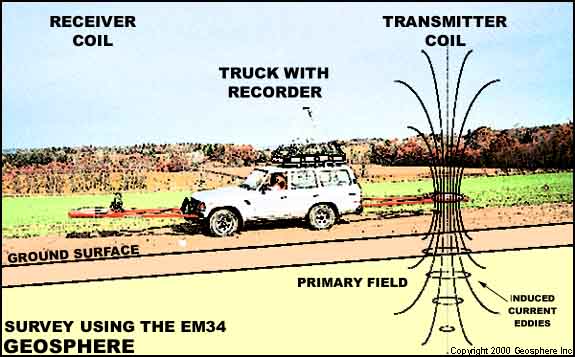

These can be converted to components in-phase and 90° out of phase with the transmitted field. The out-of-phase (or quadrature-phase ) component, using certain simplifying assumptions, can be converted to a measure of apparent ground conductivity. The in-phase component, while generally not responsive to changes in bulk conductivity, is especially responsive to discrete, highly-conductive bodies such as metal objects. The apparent conductivity measurement is the average conductivity of one or more layers in the ground in the proximity of the instrument, to a depth of investigation dependent on the coil spacing, orientation, operating frequency of the instrument, and the individual conductivity of each ground layer.
![]()
email:
consultants@geosphereinc.com
124 north auburn road auburn, mi 48611 tel: (989) 662-6149
fax: (989) 662-7701
copyright ©1990-2007 geosphere inc

